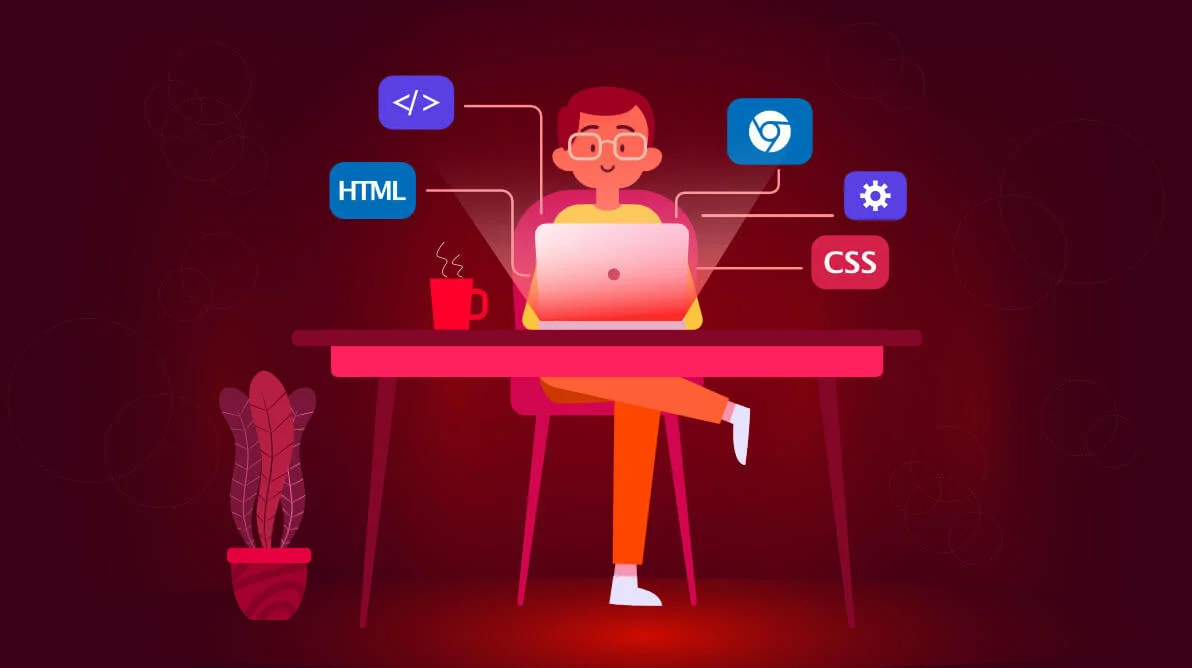
In the ever-evolving field of web development, the choice of programming language and frameworks plays a pivotal role in shaping the success of a project. This comprehensive guide not only explores the essential programming languages but also delves into popular frameworks for both front-end and back-end development. Additionally, we provide a detailed roadmap for aspiring web developers to navigate their journey to mastery.
Widely recognized as the language of the web, JavaScript is fundamental for front-end development, enabling the creation of dynamic and interactive user interfaces.
Frameworks like React.js, Angular.js, and Vue.js are powerful tools in the JavaScript ecosystem, each offering unique advantages.
Read also: Python vs JavaScript: Comparision of Basic Syntax
Renowned for its readability and versatility, Python is an excellent choice for back-end development. It is the language behind frameworks such as Django and Flask, known for their simplicity and rapid development capabilities.
Emphasizing elegant syntax and developer-friendly conventions, Ruby is often associated with the Ruby on Rails framework. This combination accelerates the development process, making it a favorite for startups and seasoned developers alike.
A versatile language utilized for both front-end and back-end development, Java provides the foundation for many enterprise-level applications. Frameworks like Spring offer comprehensive solutions for building robust back-end systems.
Particularly well-suited for server-side scripting, PHP remains a popular choice for web development. Its seamless integration with databases makes it a go-to language for creating dynamic web pages.
Developed by Facebook, React.js employs a component-based architecture, allowing developers to create reusable UI components. Its virtual DOM enhances performance, making it ideal for large-scale applications.
Maintained by Google, Angular.js is a full-fledged front-end framework suitable for building single-page applications. Its two-way data binding simplifies the synchronization between the model and view.
Gaining popularity for its simplicity and flexibility, Vue.js offers an incremental integration approach, making it easy to adopt in existing projects. Its lightweight nature and ease of use appeal to developers at various skill levels.
Following the model-view-template (MVT) architectural pattern, Django simplifies complex tasks and encourages rapid development. It includes an ORM (Object-Relational Mapping) system for efficient database interaction.
A minimalist framework for Node.js, Express.js is well-suited for building scalable and lightweight web applications. Its middleware system allows developers to customize the request-response cycle.
Embracing the convention over configuration (CoC) philosophy, Ruby on Rails streamlines development by minimizing decision-making. It emphasizes best practices, making it an efficient framework for building robust applications.
Master HTML, CSS, and JavaScript, the foundational trio of web development.
Dive into a front-end framework (React.js, Angular.js, or Vue.js) and understand responsive design along with CSS preprocessors like Sass.
Choose a back-end language (Python, JavaScript, Ruby, Java, or PHP) based on project requirements.
Learn a corresponding back-end framework (Django, Express.js, Ruby on Rails) to streamline development.
Grasp the fundamentals of databases (SQL, NoSQL) and learn to interact with them using ORM.
Acquire proficiency in Git and GitHub for effective version control.
Understand basic DevOps concepts, delve into containerization with Docker, and explore deployment on cloud platforms like AWS or Heroku.
Familiarize yourself with web security best practices, ensuring the robustness of your applications.
Stay updated with industry trends, adopt emerging technologies, and actively participate in the web development community.
Marking International Human Rights Day, Sindh Government Spokesperson and Sindh Human Rights Commission Board Member…
The Karachi Water and Sewerage Corporation (KW&SC) has begun expedited work to replace a deteriorated…
Pakistan’s gaming and animation ecosystem enters a transformative phase as the Centre of Excellence in…
A multi-platform outage struck earlier today, triggered by service issues at content delivery network (CDN)…
Taking a ride or sending a package shouldn’t come with second guesses. That’s why inDrive,…
First-ever official representation from Pakistan at FC Barcelona’s base camp marks a new chapter in…
This website uses cookies.